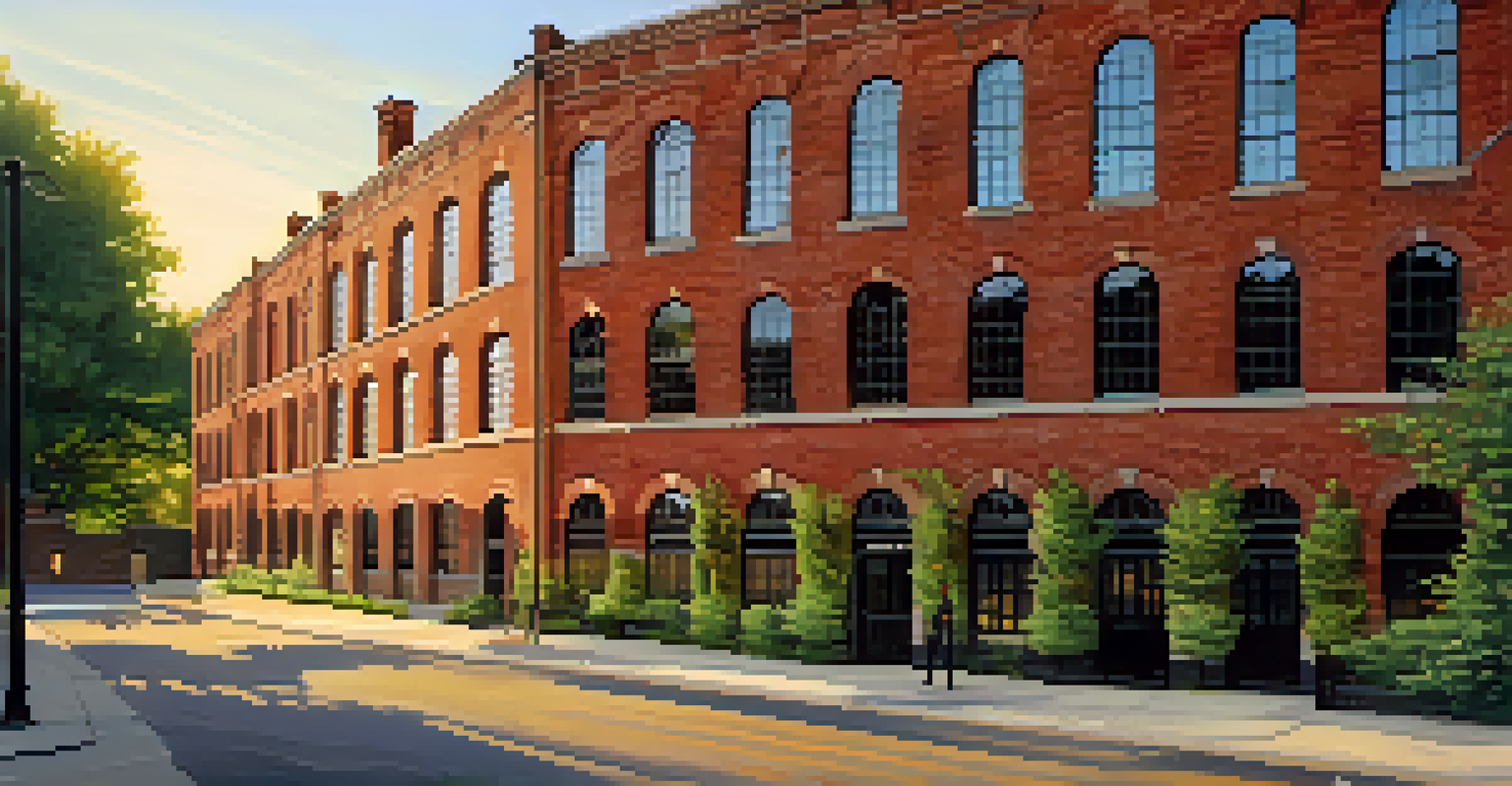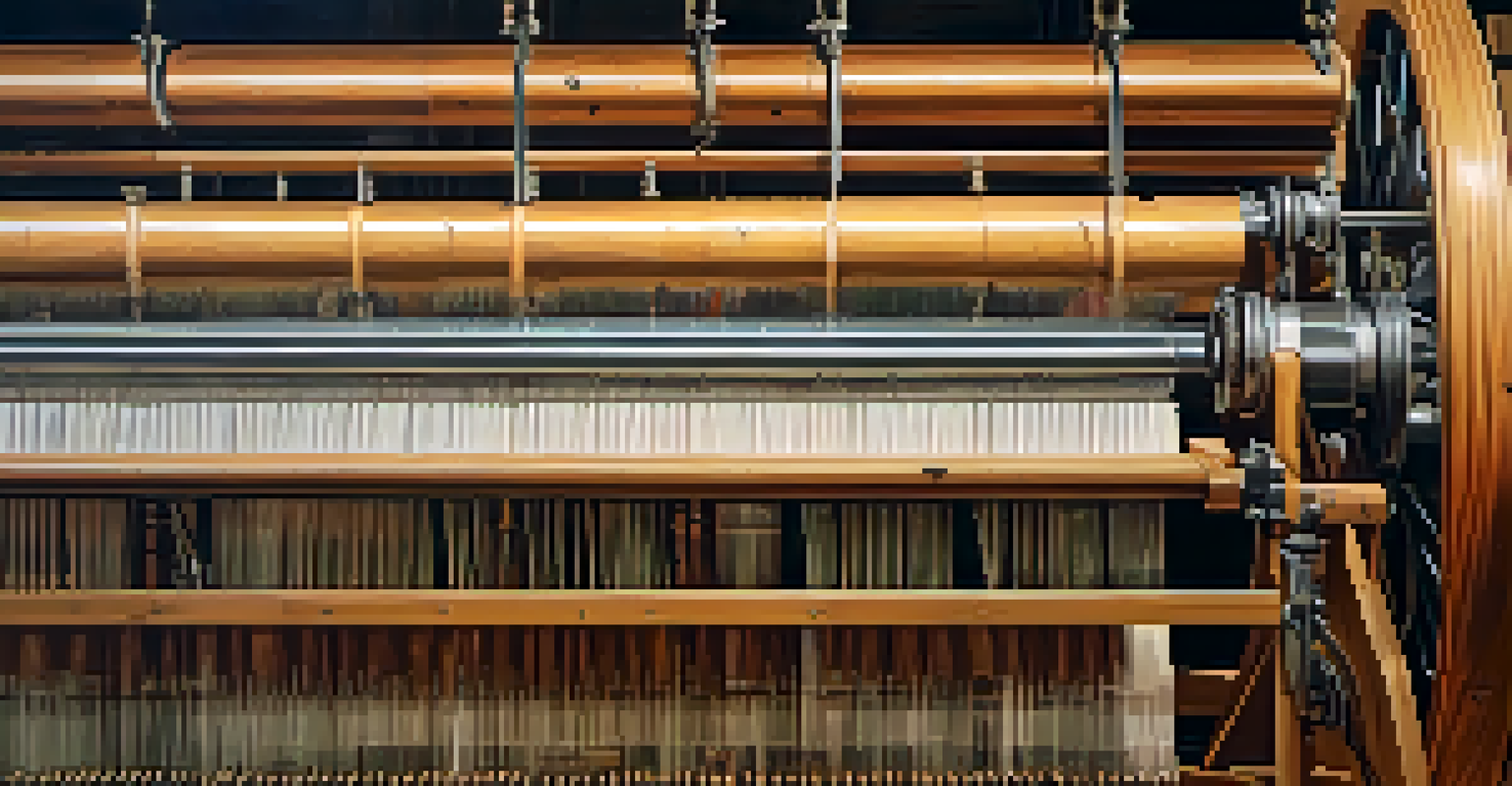Boston's Textile Mills: The Heart of Industrial Growth

The Rise of Boston's Textile Industry in the 19th Century
In the early 1800s, Boston emerged as a crucial player in the textile industry. With a strategic location near the Atlantic Ocean and access to rivers, it was well-positioned for manufacturing. The city's growth paralleled the advent of the Industrial Revolution, which transformed traditional methods of production into factory-based systems.
The textile industry, like any industry, is driven by the people who work in it. Their hopes, dreams, and struggles are what shape its future.
The introduction of new technologies, such as the power loom, significantly boosted textile production. These innovations allowed mills to operate faster and more efficiently, drawing in both investment and labor. As workers flocked to Boston for employment opportunities, the city became a melting pot of cultures and ideas.
By the mid-19th century, Boston's textile mills were not just factories; they were the lifeblood of the local economy. They provided jobs for thousands and were central to the city's identity, shaping its social fabric and driving further industrial growth.
Key Figures Behind the Textile Boom
Several influential figures played crucial roles in the rise of Boston's textile industry. Entrepreneurs like Francis Cabot Lowell were instrumental in establishing the first integrated textile mills. Lowell's vision combined cotton spinning and weaving under one roof, setting a new standard for efficiency and production.

These pioneers not only invested in technology but also advocated for better working conditions and wages. Their efforts attracted skilled laborers, including women, who made up a significant portion of the workforce. This shift provided women with unprecedented economic independence, further changing societal norms.
Boston's Textile Industry Growth
In the 19th century, Boston's strategic location and technological advancements fueled the rise of a thriving textile industry.
As the industry expanded, so did the influence of these key figures. Their legacy is seen in the robust infrastructure and labor movements that emerged in Boston, setting the stage for future industrial endeavors.
The Role of Immigrant Labor in Textile Mills
The textile mills in Boston relied heavily on immigrant labor, which was vital for their growth. Waves of immigrants from Ireland, Germany, and later, Italy, provided the workforce needed to keep the mills running day and night. These workers often accepted low wages and grueling hours, driven by the promise of a better life.
Innovation is the ability to see change as an opportunity - not a threat.
As these communities settled in Boston, they contributed significantly to the city's cultural landscape. They brought their customs, traditions, and languages, enriching the local culture while forming close-knit communities around the mills. This blend of cultures fostered a unique environment that was both challenging and vibrant.
However, the reliance on immigrant labor also led to exploitation and harsh working conditions. Labor movements began to form, advocating for workers' rights and fair treatment, highlighting the struggles and resilience of those who powered the textile industry.
Technological Innovations Transforming Textile Production
Technological advancements were pivotal in revolutionizing Boston's textile mills. The introduction of the steam engine allowed for increased production capacity and reduced reliance on water power. This innovation led to the expansion of mills beyond riversides, enabling growth into urban areas.
Additionally, innovations like the spinning jenny and the cotton gin streamlined manufacturing processes. These machines not only increased efficiency but also reduced the labor needed for each task, allowing mills to operate with fewer workers while producing more goods.
Impact of Immigrant Labor
Immigrant workers played a crucial role in the textile mills, contributing to both the economy and the cultural landscape of Boston.
As factories adopted these technologies, Boston cemented its reputation as a leader in textile manufacturing. This spirit of innovation laid the groundwork for further advancements in various industries, showcasing the interconnectedness of technological progress and economic growth.
The Impact of the Civil War on Textile Mills
The Civil War had a profound impact on Boston's textile mills, both positive and negative. Initially, the conflict disrupted cotton supplies from the South, creating challenges for mill owners. This shortage led to increased prices and forced some mills to reduce production or even close their doors temporarily.
However, the war also created new opportunities. With the demand for uniforms and other textile products skyrocketing, mills pivoted to meet these needs. This shift not only kept many factories operational but also expanded the workforce as production ramped up.
Moreover, the war catalyzed social change, as many mill workers began to advocate for their rights and better working conditions. These movements gained momentum during and after the war, leading to significant reforms in labor practices across the industry.
The Decline of Boston's Textile Industry
By the late 19th and early 20th centuries, Boston's textile industry began to decline. Factors such as rising labor costs, competition from the South and overseas, and changing consumer preferences contributed to this downturn. Many mills struggled to adapt to these shifts, leading to closures and job losses.
As factories shuttered, the landscape of Boston changed dramatically. Once-bustling neighborhoods filled with workers became ghost towns, and many families were forced to seek work elsewhere. This decline not only affected the economy but also the cultural dynamics of the city.
Decline and Legacy of Mills
Despite the decline in the textile industry by the early 20th century, the legacy of Boston's mills continues to influence the city today.
Despite the downturn, the legacy of Boston's textile mills remains. Their contributions to the city's growth and the role they played in the labor movement continue to influence Boston's identity today.
Preserving the Legacy of Textile Mills Today
Today, remnants of Boston's textile mills can still be found throughout the city, serving as a reminder of their historical significance. Many former mill buildings have been repurposed into residential lofts, art galleries, and community spaces. This transformation showcases the ongoing connection between Boston's industrial past and its vibrant present.
Furthermore, local museums and historical societies work tirelessly to preserve the stories of those who labored in the mills. Through exhibits and educational programs, they shed light on the contributions of immigrant workers and the evolution of labor rights.

As Boston continues to evolve, the spirit of its textile mills lives on. The lessons learned from this era inform contemporary discussions about labor, industry, and community, ensuring that the heart of industrial growth remains an integral part of the city's narrative.